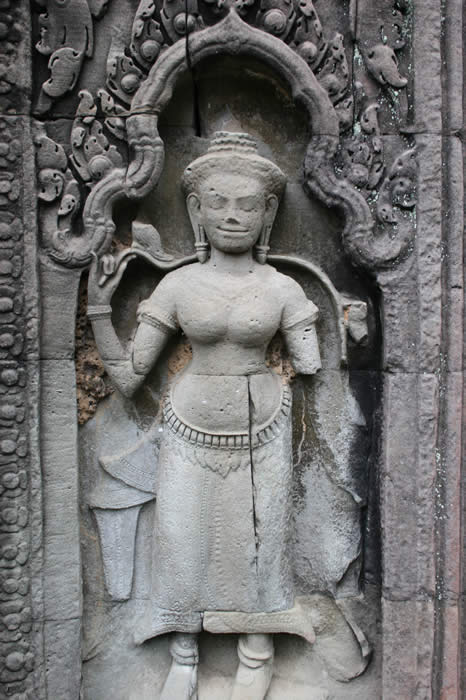and surrounding areas a series of photographs by Lee van Laer Located in Siem Reap, Cambodia, Angkor Wat is one of the world's largest temple complexes. The surrounding area has many thousands of related structures, representing one of the most densely populated lost civilizations in the world. Having left few written records, and few reports from outside societies about their activities or culture, it has been left to later civilizations to interpret what they can from the ruins. The intention of this web site is to introduce readers to a visual impression of the area. Links are provided for those who want to read about it in more detail. |
Bas-relief at Angkor Wat |
This is a relatively small selection of the bas relief at the main temple. |
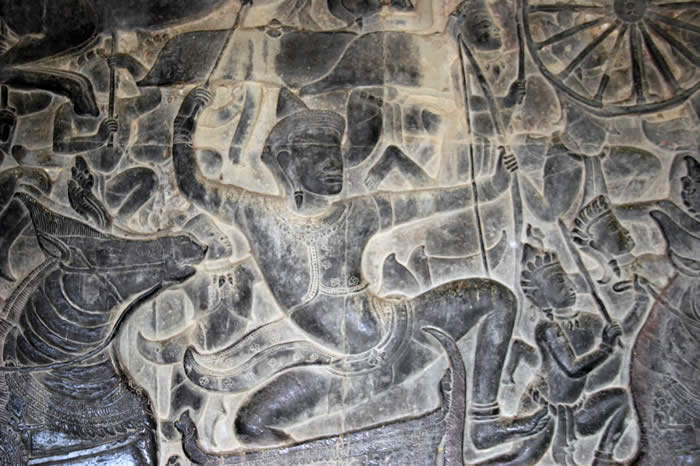 |
As we begin to move further into the temple complex, we enter areas where extraordinary examples of bas-relief are featured. Many of the scenes depict conflict, and warriors; many are distinctly supernatural (ghandarvas, demons, and earth spirits) , but others represent king Suryavarman II and members of his court. |
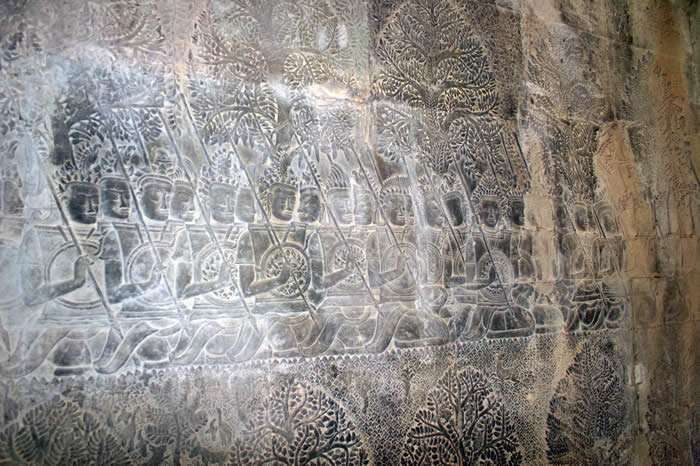 |
A procession of warriors in a forest setting. |
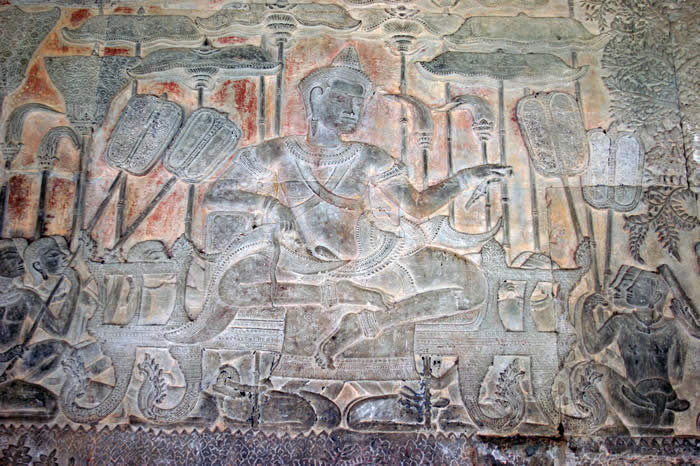 |
King Suryavarman II, seated on a dais under umbrellas, and surrounded by servants fanning him. Note the feet of the dais, which are nagas. |
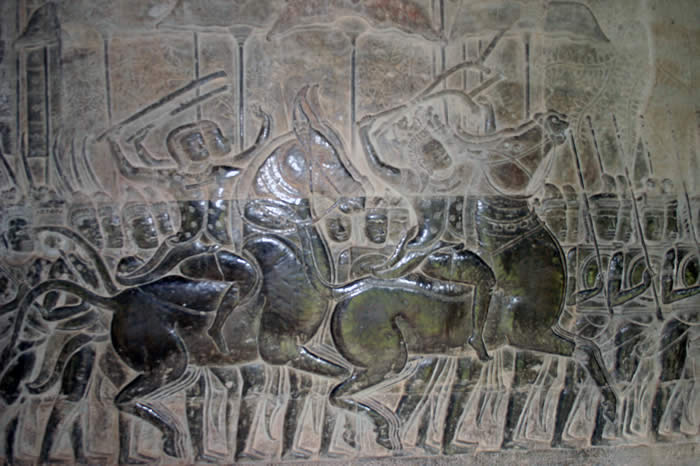 |
Cavalry and foot soldiers in the procession of Suryavarman |
 |
More warriors in procession. Take note of the graceful use of abstraction and curvature to create a quite extraordinary impression. |
 |
Stylized horses convey an impression of grace and power. |
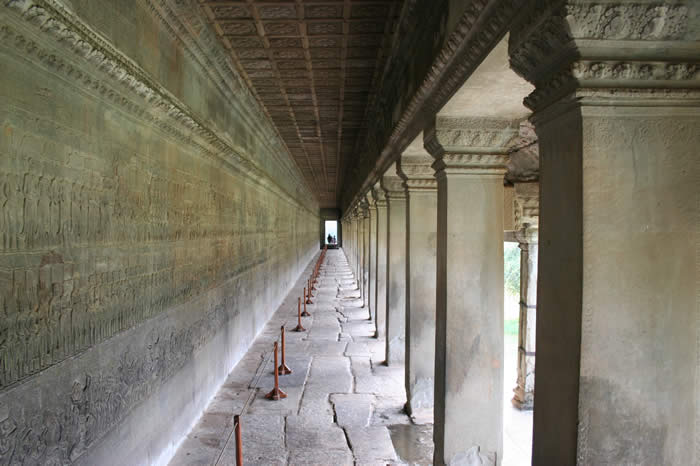 |
This long gallery–representing what is arguably the crowning artistic achievement of the temple complex–contains a stunning bas relief depicting the churning of the waters of the sea of milk |
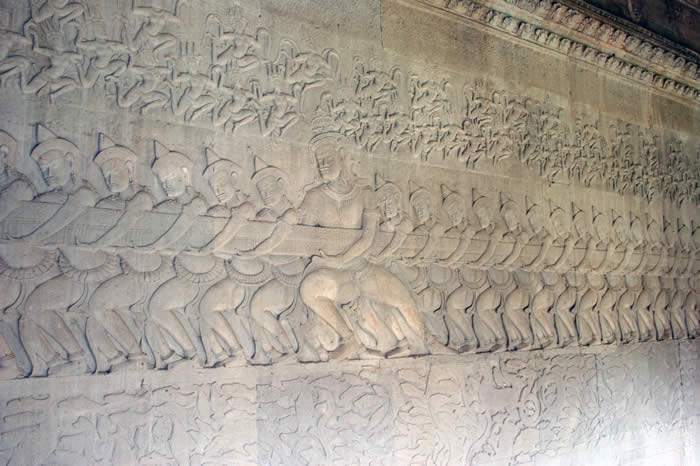 |
Gods (Devas) pull on one side of the naga's body. |
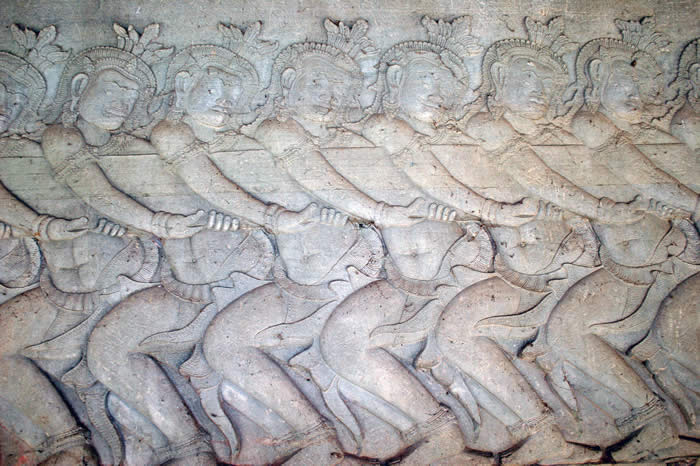 |
Asuras, demons temporarily allied with the Devas in order to create the elixir of immortality, pull on the other. |
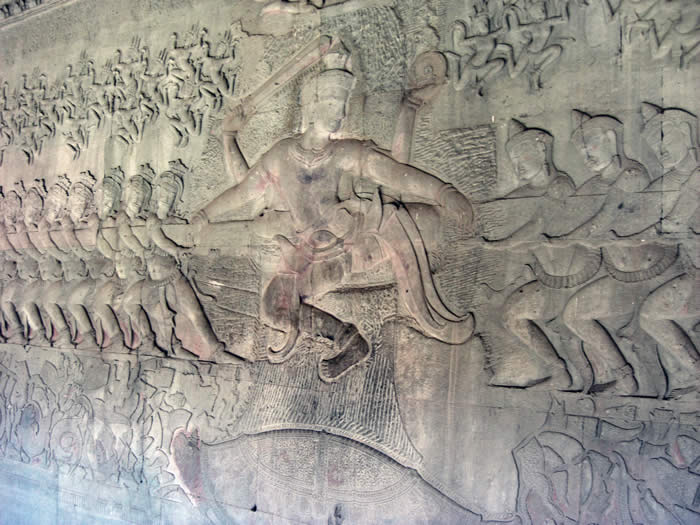 |
Vishnu presides over the churning, which occurs over the back of his avatar Kurma, a great turtle. |
 |
The turtle-avatar of Vishnu, Kurma |
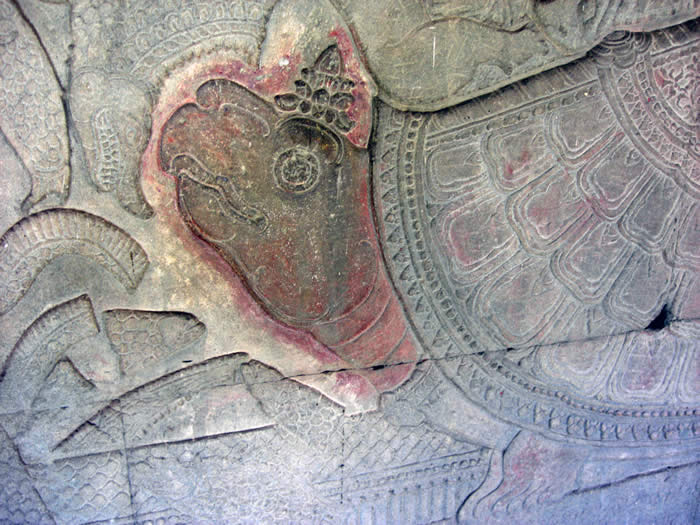 |
Kurma detail |
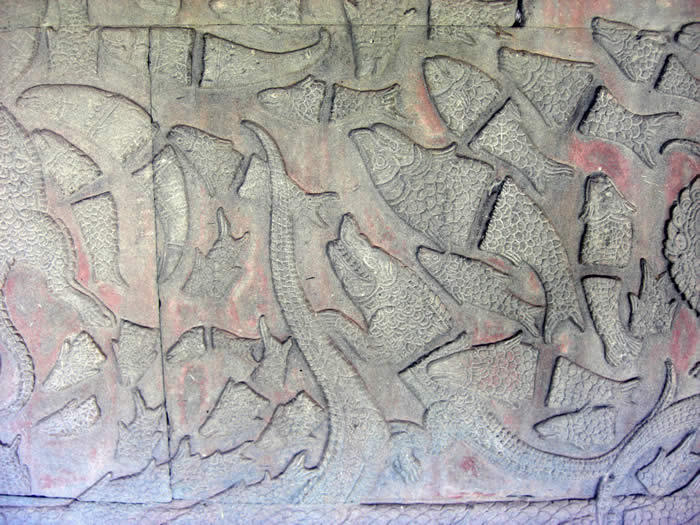 |
Details from the water under the turtle. A colorful depiction of fish and crocodiles being torn to pieces by the churning motion. Poor things. |
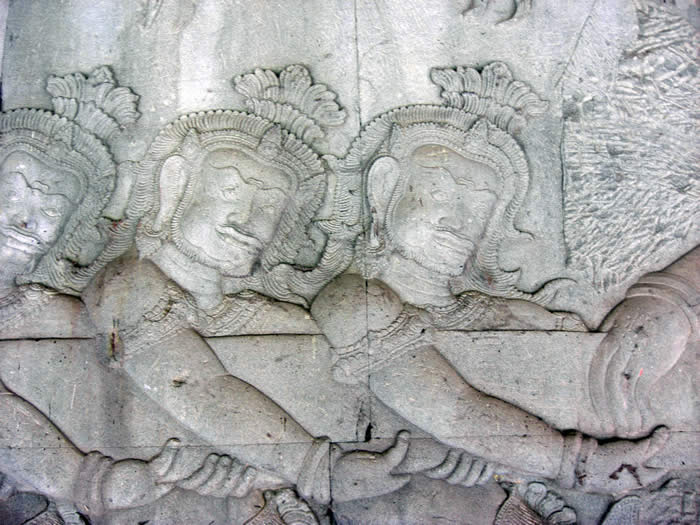 |
Detail of the asuras, giants, or demons, supposed to represent sinful or materialistic impulses. |
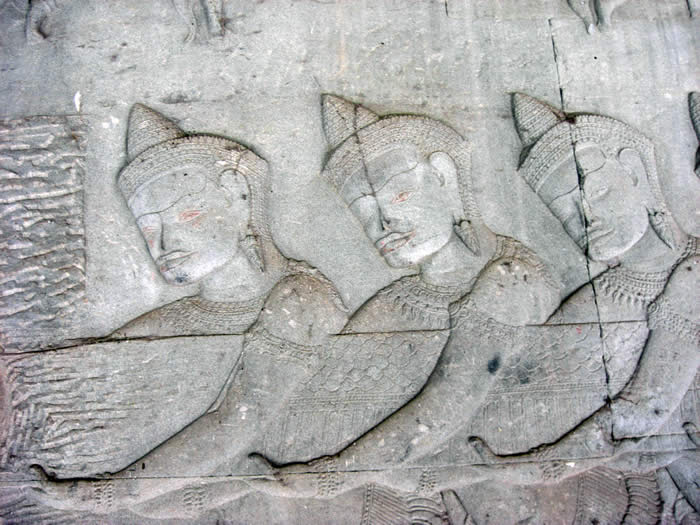 |
A detail of the Devas, benevolent Gods pulling from the other side. In this myth, the tension between the higher and lower impulses is what creates the force needed to produce the elixir of immortality. |
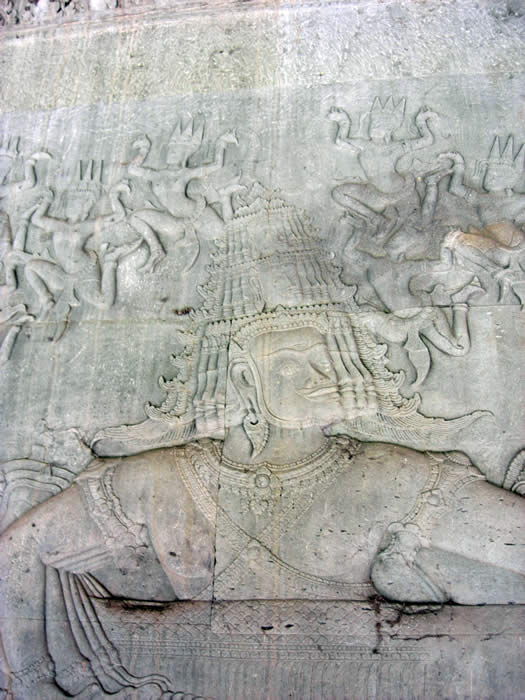 |
A god with many arms and faces, perhaps representing the many aspects, or multiple "I"s, of materiality |
 |
Smaller Gods are intermittently interspersed with larger ones. This one expresses great confidence and force. |
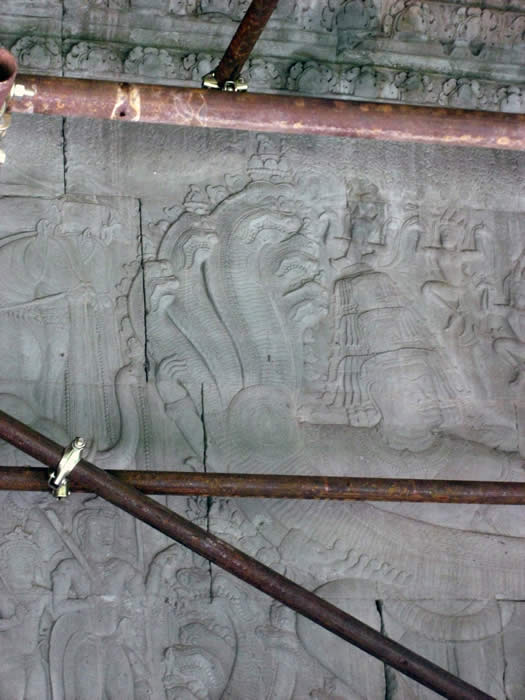 |
One tail end of the naga, or serpent, being used to churn the milk. The asura Ravana holds the tail. (Consistent with the Ramayana, the other end is held by Hanuman, the monkey god.) The naga is conventionally associated with spinal energies in kundalini yoga; so despite its well-known place in folklore, the myth of the churning can be interpreted as a methaphor for the yogi's attempts to achieve immortality through the use of esoteric energies. |
 |
An image of Garuda. This may be a depiction of the myth in which he extinguishes the protective fire of the gods with the water of many rivers as he attempts to recover the elixir of immortality. |
 |
A deity with many arms and weapons. |
Images of battle abound. The sculptors achieved a remarkable degree of fluidity of expression. |
Equestrian warrior |
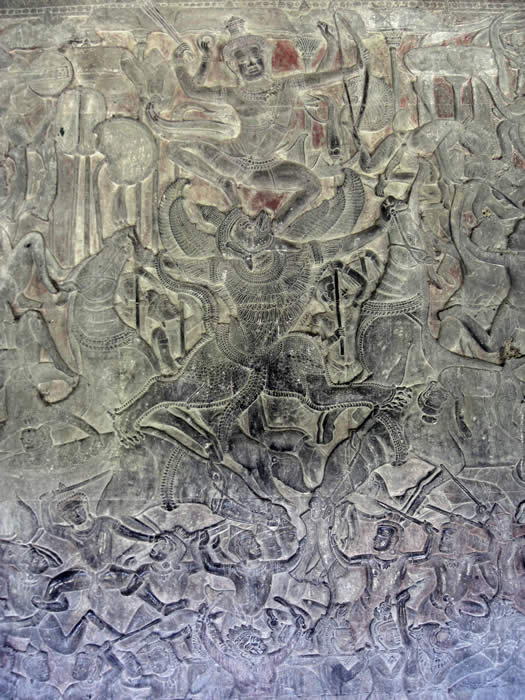 |
Krishna, having mounted Garuda as his chariot. The metaphor of Garuda as the chariot for Krishna is a reference to the incarnation of the soul, or higher self, in the body of an animal-- the taloned, flesh-eating eagle. |
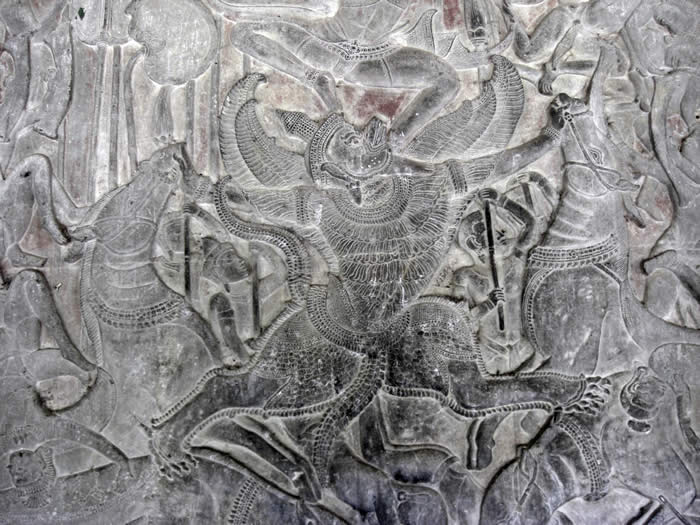 |
Detail of Garuda |
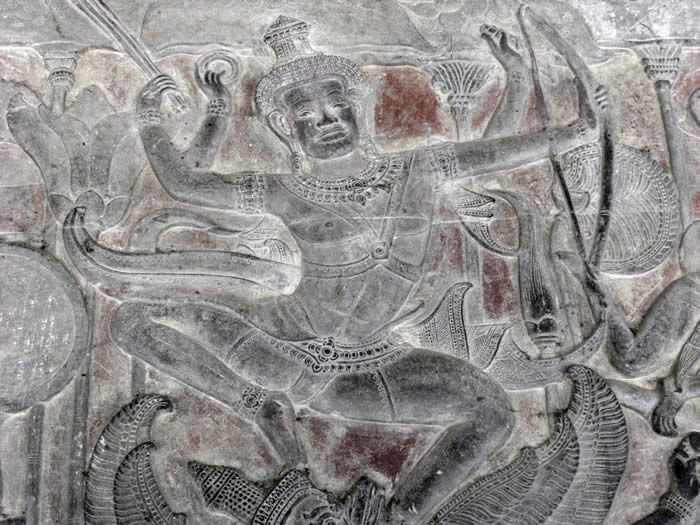 |
Detail of Krishna |
|
Nefersweetie an incidental web space created and supervised by Lee van Laer |
